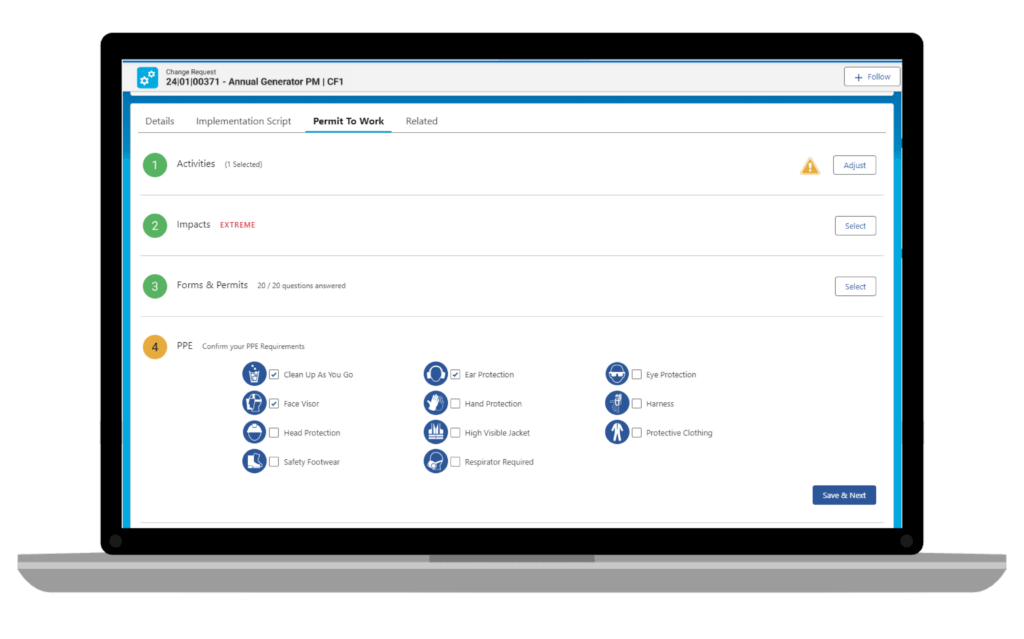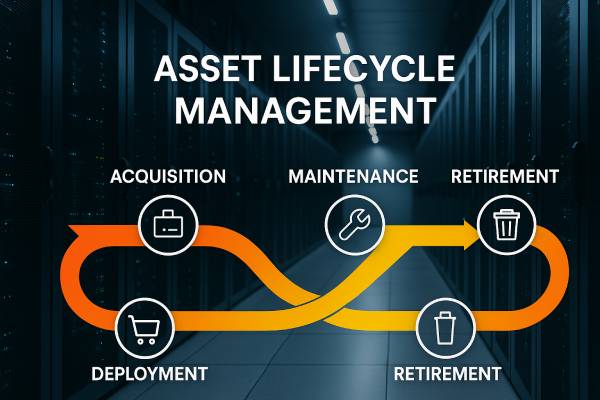Updated on December 9th, 2024
For data center asset management, ensuring safety and compliance is paramount. The Permit to Work (PTW) process is critical in maintaining these standards, but traditional methods often fall short. MCIM’s integrated Permit to Work module lets data center operators and executives address the limitations of manual and disjointed systems with a streamlined and efficient approach.
The Pitfalls of Traditional Permit to Work Methods
A traditional Permit to Work system is a formal written document that outlines the work’s specific tasks, identifies associated hazards, and defines necessary safety measures and controls to mitigate those hazards. The permit requires signatures from authorized personnel, acknowledging the risks and confirming that all safety precautions are in place before work commences. This document acts as a communication tool between site management, maintenance staff, and operational teams, ensuring everyone is on the same page regarding the scope and risks of the work.
This outdated PTW method, commonly reliant on paper-based safety management systems or basic digital tools, comes with significant drawbacks. Teams having to consistently follow ever-changing rules and regulations increases the risk of human error and compliance failure. Incomplete or misplaced records complicate audit and compliance processes, potentially resulting in fines.
Communication delays are another major issue, with physical documents and emails slowing down hazard management in critical situations. Tracking and oversight become challenging, supervisors are unable to monitor ongoing activities effectively, which leads to delays or unauthorized work. Inconsistent implementation of safety protocols further exacerbates these problems, creating unsafe working conditions for personnel involved. Additionally, manual systems lack the scalability needed for growing businesses, resulting in inefficiencies and increased safety risks.
The Advantages of a Digital Permit to Work Solution
A digital PTW solution can mitigate these issues by automating and streamlining the entire permit management process. Key benefits of a PTW system include:
- Standardized Procedures: Uniform safety protocols across all locations.
- Condition-Based Permitting: Required permits are automatically mapped to specific work types, ensuring compliance.
- Enhanced Safety: Consistent application and documentation of safety protocols reduce accident risks and increase safe conditions.
- Real-Time Access: Immediate visibility into permit statuses and updates enhances monitoring.
- Improved Compliance: Easier to meet and demonstrate regulatory requirements, simplifying audits.
- Streamlined Processes: Reduced paperwork and faster processing times improve efficiency.
- Centralized Documentation: Efficient organization and accessibility of records.
- Enhanced Communication: Timely updates and alerts improve coordination.
- Data-Driven Decisions: Analytics and insights enhance safety management.
- Scalability: Accommodates business growth without increased administrative burden.
Why MCIM’s Integrated Permit to Work Module Stands Out
A study published by the NIH’s National Library of Medicine detailed how human errors in permit to work systems could lead to severe consequences, such as accidents, injuries, and even fatalities. The study concluded that “automation of the PTW issuance procedure can be very effective in preventing and reducing the probability of human errors.” That’s where MCIM can help.
With MCIM, operators and executives overcome the limitations of traditional and disjointed PTW systems through a comprehensive solution tailored for risk assessment in mission-critical environments like data centers:

- Comprehensive Safety Management: Ensures all safety protocols are applied and tracked, reducing accident risks.
- Enhanced Monitoring: Real-time access to permit statuses and updates prevents delays and safety risks.
- “Out of the Box” Compliance: Streamlined compliance with legal and regulatory requirements, simplifying audits.
- Templatized Automation: Reduces manual data entry, minimizing human error and administrative overhead.
- Unified Data Management: Central repository for all PTW documentation improves audit efficiency.
- Standardized Procedures: Consistent safety protocols across all locations and teams.
- Integrated Communication: Instant updates and alerts improve response times.
- Robust Analytics and Reporting: Data-driven insights enhance safety management and decision-making.
- Global Scalability: Accommodates business growth without increasing administrative burden.
- Enhanced Impact Analysis: easy identification of the likelihood and severity of work impact no business units across the company.
- Seamless Integration: Works with MCIM’s other modules, reducing the need for multiple point solutions.
Transform Your Data Center Operations with Permit to Work Through MCIM
MCIM’s Permit to Work module integrates seamlessly with broader operational processes. Designed to meet the comprehensive needs of modern data centers, this integrated approach provides substantial efficiencies in cost, time, and resources, along with enhanced compliance and safety.
For data center executives, adopting MCIM’s Permit to Work module means operational excellence. For the workers performing the tasks, MCIM’s Permit to Work means efficiency — and a safer work environment.
Embrace the best of PTW management and ensure your data center operates at the highest standards of efficiency and safety.
To learn more about how MCIM’s Permit to Work module can transform your data center operations, visit our Permit to Work Solution page or contact our team to talk more about how MCIM can transform your business today.



